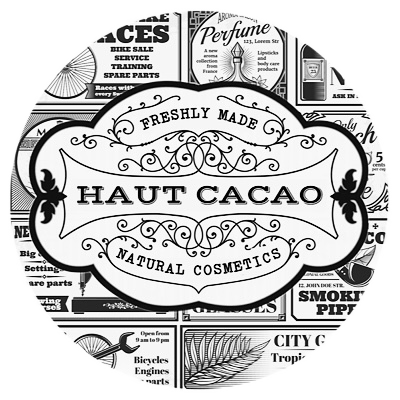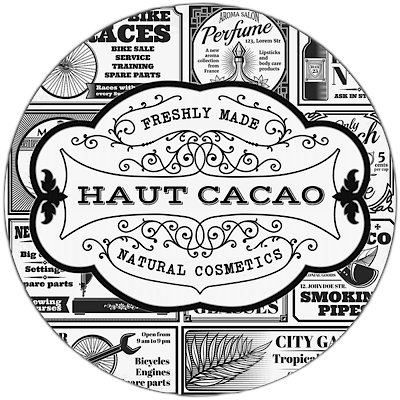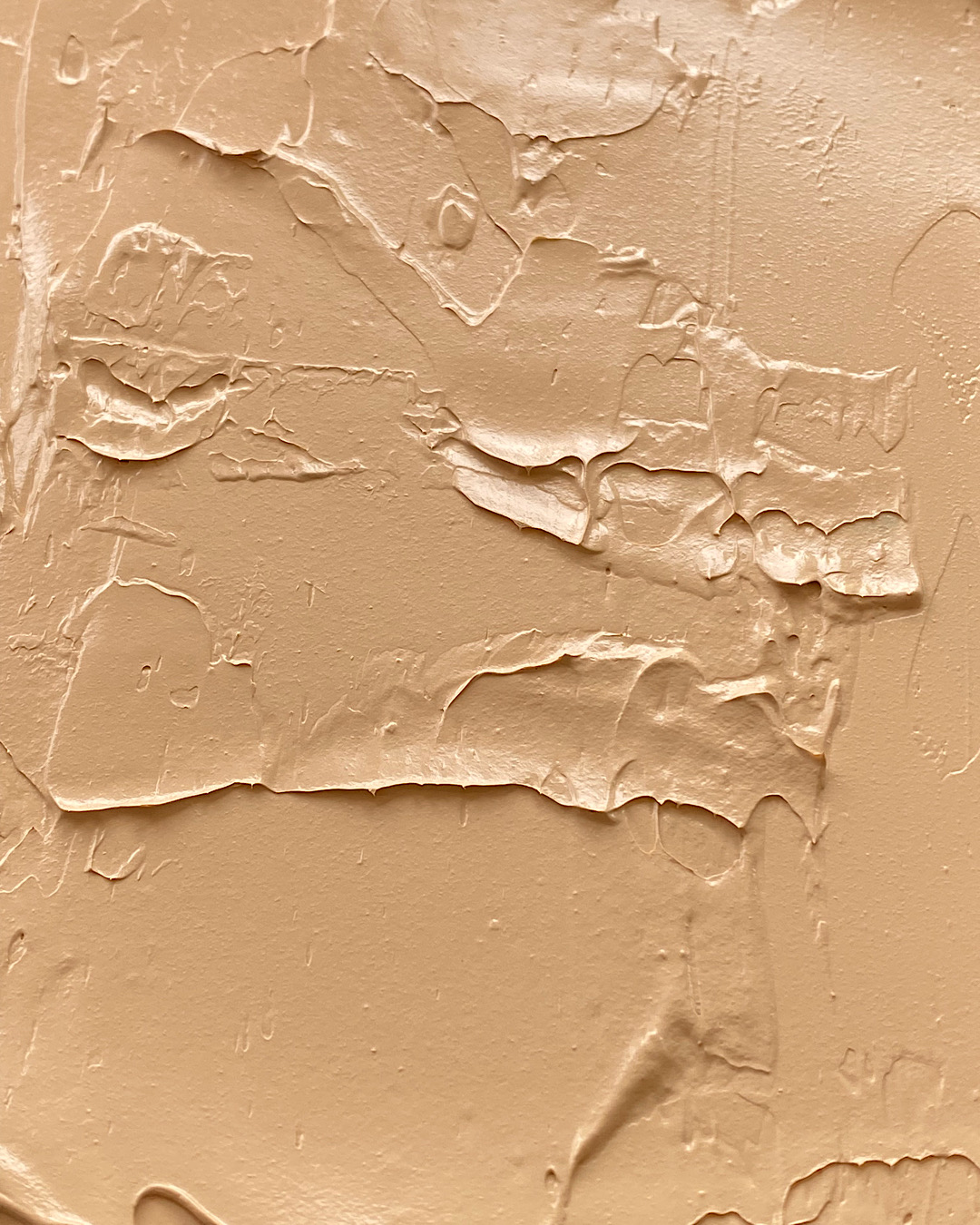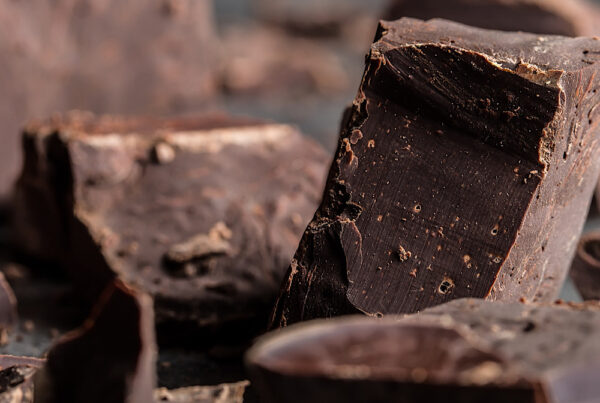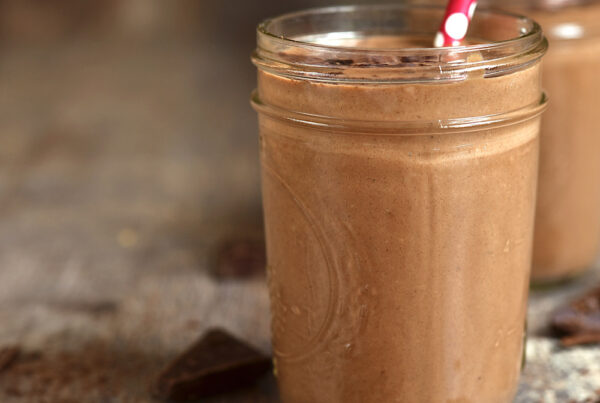I have always loved and appreciated the opportunity to work with raw ingredients since I started my line. It’s like working with dirt. With raw clays, herbs, superfoods, and minerals you get a mood boost. Some ingredients though, I questioned, and I wanted to dig deeper on their origins and how they were manufactured. As I have delved more into skincare and haircare in the last few years, I have wanted to find alternatives to a few ingredients that didn’t resonate with me. Often if the texture is really sticky, or a texture that I do not find appealing for the scalp and body as a whole. It has also made that particular ingredient more of a red flag to me when it comes to it being in a food product. It seems synergistic that if an ingredient is not good for our gut microbiome, it is not going to be great for your skin microbiome either.
100% wax-free + gum-free + synthetic emulsifier-free formulas
I was delighted to learn that I wasn’t alone in feeling the strong need to skip some of these common synthetic additives in my formulations. It is called corneotherapy. Corneotherapy works ‘from the outside in’ by focusing on the restoration and maintenance of the skin’s outermost layer-the stratum corneum (SC)-to trigger positive changes in the deeper layers of the skin124.
Key Mechanisms of the Outside-In Approach
•Focus on the Stratum Corneum: Corneotherapy starts by repairing and restoring the stratum corneum, the skin’s protective barrier. This layer consists of tightly packed cells and lipids that keep moisture in and harmful substances out. Damage to this layer leads to issues like dryness, irritation, and increased sensitivity.
•Barrier Restoration: By supplying the skin with natural oils, moisturizing factors, and skin-identical ingredients (like ceramides, fatty acids, and cholesterol), corneotherapy mimics and replenishes the skin’s own barrier structure. This helps the stratum corneum regain its function as a shield against environmental stressors and pathogens.
•Therapeutic Effects Move Inward: Once the outer barrier is restored, the therapeutic benefits extend to deeper layers of the skin. A healthy stratum corneum sends positive signals to the underlying epidermis, supporting regeneration, reducing inflammation, and enhancing the skin’s overall resilience.
•Avoidance of Harsh Ingredients: Corneotherapy avoids products with irritants, allergens, fragrances, preservatives, and harsh chemicals, which can further disrupt the barrier. Instead, it uses gentle, biocompatible formulations designed to support the skin’s natural processes.
•Gradual Healing and Homeostasis: By maintaining the integrity of the outer layer, corneotherapy helps the skin maintain hydration, resist external irritants, and gradually heal from chronic inflammation or damage. This supports long-term skin health and balance (homeostasis).
“Corneotherapy is known for its signature outside-in therapy approach, whereas ‘outside’ is the stratum corneum and ‘in’ are the therapeutic effects starting in the stratum corneum and working their way into the deeper skin layers.”
Common Skin Conditions Treated with Corneotherapy
Corneotherapy is particularly effective for a range of skin conditions that are linked to a compromised or weakened skin barrier. By focusing on barrier repair and maintenance, corneotherapy helps manage, alleviate, and prevent many chronic and inflammatory skin disorders. The most common conditions treated include:
•Eczema (Atopic Dermatitis): Corneotherapy helps to restore the skin barrier, reduce inflammation, and minimize flare-ups by using gentle, barrier-supporting ingredients.
•Psoriasis: By supporting the skin’s barrier, corneotherapy can help manage symptoms such as scaling, redness, and irritation associated with psoriasis.
•Rosacea: The approach calms inflammation and reduces sensitivity, making it suitable for rosacea-prone skin.
•Aging Skin: As the skin ages, its barrier function declines, leading to dryness, fine lines, and increased susceptibility to damage. Corneotherapy helps to maintain hydration, resilience, and overall skin health, thereby addressing premature aging.
•Xerosis (Dry Skin): Corneotherapy replenishes moisture and restores the lipid barrier, effectively treating chronic dryness.
•Ichthyosis: This group of disorders, characterized by dry, scaly skin, benefits from the barrier-repairing and hydrating effects of corneotherapy.
•Essential Fatty Acid Deficiency (EFAD): Corneotherapy addresses the underlying lipid barrier deficiency, improving skin texture and function.
•Acne: By restoring balance and reducing irritation, corneotherapy can help manage acne and prevent post-inflammatory hyperpigmentation.
•Pigmentation Disorders: Strengthening the barrier and supporting skin regeneration can help even out skin tone and reduce hyperpigmentation.
How Corneotherapy Addresses Premature Skin Aging
Corneotherapy tackles premature skin aging by focusing on the restoration and maintenance of the skin’s natural barrier, particularly the stratum corneum (the outermost layer of the skin). This approach is fundamentally different from many traditional anti-aging treatments, which often rely on aggressive exfoliation or resurfacing. Here’s how corneotherapy works to prevent and address premature aging:
1. Strengthening the Skin Barrier
Corneotherapy emphasizes repairing the lipid matrix and replenishing the natural moisturizing factors (NMF) within the skin. By doing so, it restores the skin’s natural defense system, improving its ability to retain moisture and protect against environmental stressors. Well-hydrated skin appears plumper and less prone to fine lines and wrinkles, which are common signs of aging.
2. Reducing Inflammation and Preventing Damage
A compromised skin barrier allows irritants, allergens, and pathogens to penetrate more easily, triggering inflammation. Chronic low-grade inflammation is a key driver of premature aging, leading to collagen breakdown, pigmentation, and loss of elasticity. Corneotherapy prevents this by keeping the epidermis intact and minimizing unnecessary stimulation of the skin’s immune and defense systems.
3. Avoiding Harmful Practices
Many popular skincare methods involve harsh exfoliation, peels, or aggressive treatments that strip away the protective outer layers of the skin. Corneotherapy avoids these practices, instead using gentle, biocompatible products that support the skin’s natural processes and maintain its integrity. This reduces the risk of barrier damage, sensitivity, and accelerated aging.
4. Supporting Long-Term Skin Health
Corneotherapy’s “outside-in” approach means that treatment starts at the surface and works inward, focusing first on establishing a healthy, resilient barrier. This not only protects against immediate environmental threats but also supports the skin’s regenerative capacity, helping to maintain youthful structure and function over time.
5. Preserving the Microbiome and Acid Mantle
By maintaining the integrity of the stratum corneum, corneotherapy also preserves the skin’s acid mantle and microbiome. These elements are crucial for self-regulation, defense against pathogens, and minimizing oxidative stress-all factors that influence the rate of skin aging.
In essence, corneotherapy prevents and addresses premature skin aging by prioritizing barrier health, minimizing inflammation, and supporting the skin’s natural defenses-leading to more resilient, youthful-looking skin over time.
what are corneotherapy superstar ingredients + treatments?
Barrier Repair and Moisturizing Agents
•Ceramides: Essential lipids that strengthen the skin barrier and improve moisture retention.
•Fatty Acids: Especially linoleic acid (omega-6), gamma-linolenic acid (from evening primrose oil), and alpha-linolenic acid (omega-3, from linseed oil), which replenish the lipid matrix and support elasticity.
•Cholesterol: A key component of the skin’s barrier, sometimes replaced with plant sterols (e.g., from argan oil).
•Natural Moisturizing Factor (NMF) Components: Includes urea, amino acids, glycerin, and mineral salts to maintain moisture balance and protect against dehydration.
Hydration and Plumping
•Alginates and Filming Polysaccharides: Permeable to water vapor, they help maintain hydration.
Antioxidants and Regenerative Actives
•Vitamins A, C, and E: Support collagen synthesis, protect against free radicals, and aid in regeneration; often encapsulated in liposomes or nanoparticles for stability and enhanced delivery.
•Polyphenols and Isoflavonoids: Plant-based antioxidants that protect against oxidative stress and environmental damage.
•Epigallocatechin Gallate (EGCG): A potent antioxidant from green tea that helps protect and repair the skin.
•Boswellia Serrata (Frankincense) Extract: Known for its anti-inflammatory and protective properties.
Supportive and Specialized Ingredients
•N-acetyl-glucosamine: Supports skin hydration and can help with firmness and elasticity.
•Peptides: Stimulate collagen production and improve skin firmness (often included in advanced corneotherapeutic formulations).
•Saponins: Plant-derived compounds used for their skin-tightening effects.
•Encapsulated Actives: Delivery systems like liposomes ensure actives reach target cells without causing irritation.
Origins and Philosophy
Corneotherapy was pioneered by Dr. Albert Kligman, who recognized the central role of the stratum corneum and its lipid barrier in skin health. The approach has gained traction among dermatologists and skincare professionals advocating for a progressive, rather than aggressive, philosophy in skin management.

